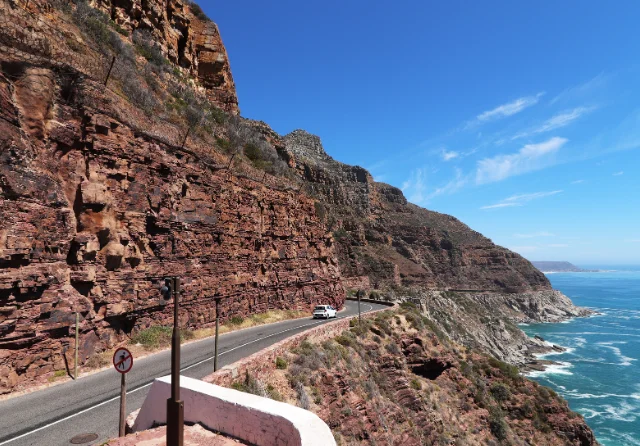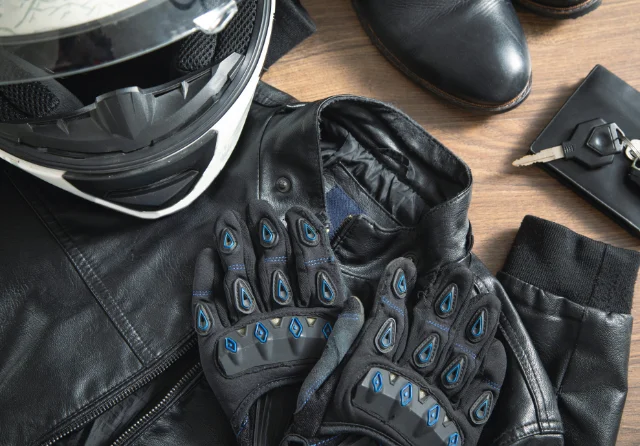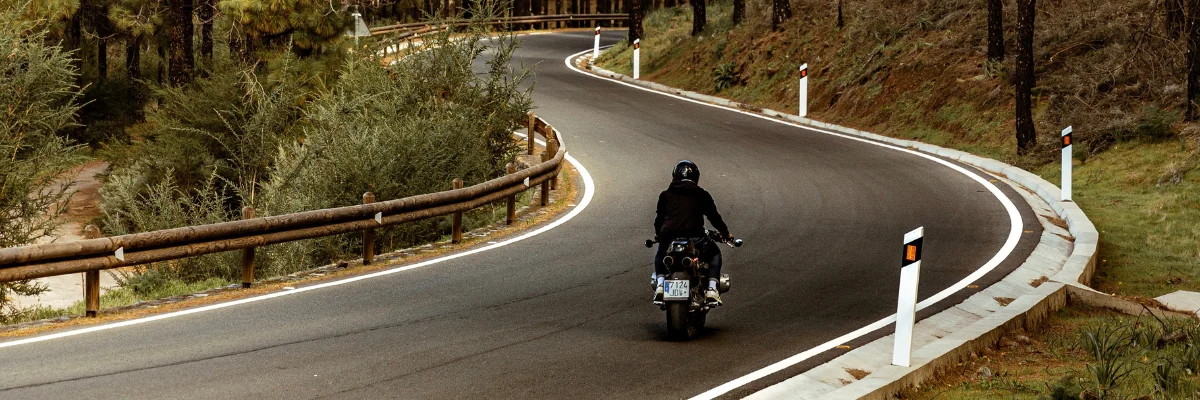Do you enjoy riding motorbike routes around Gran Canaria? Then you’ll know that getting around Maspalomas and the south of the island on a scooter is a comfortable and flexible way to make the most of your time and the good weather. The roads are in good condition and the mild climate invites you to go out almost any day of the year. With a scooter you avoid traffic jams and parking problems, and you can stop at beaches, viewpoints or villages without depending on schedules. That’s why more and more travellers look for motorbike routes in Gran Canaria to explore the island at their own pace.
If you’re wondering what to see in Maspalomas by scooter, you’ll discover there’s a huge variety: from the dunes to the port of Mogán, passing through ravines and inland villages. Renting a scooter in Maspalomas for these routes opens the door to places that would be a headache by car. In addition, riding is simple and you don’t need a powerful motorbike to enjoy the views; a moped or a 125cc is enough, along with the desire to hit the road.
Table of Contents
ToggleWhy tour Maspalomas and the south of Gran Canaria by scooter?
Before going into detail about the routes, it’s worth understanding why so many people choose motorbikes to move around this part of the island. In Gran Canaria, distances are short and the terrain is varied: in just a few kilometres you go from sea level to almost a thousand metres altitude. That contrast is much more enjoyable on two wheels. Plus, the stable climate and the network of secondary roads make the scooter a comfortable and safe option all year round.
Freedom of movement and perfect weather
Temperatures in the south of Gran Canaria rarely drop below 18 °C in winter or exceed 30 °C in summer, so you can plan your routes without worrying about extreme cold or snow. A scooter lets you improvise: if you see a hidden cove, you stop; if you fancy going up to a viewpoint, you don’t have to turn back to park. The sense of freedom is real and you set the pace.
Less traffic and access to unique places
While motorways can feel overwhelming, secondary roads such as the GC-500 or the GC-60 have less traffic and allow you to enjoy the landscape. With a scooter you can reach small car parks next to beaches like Taurito or climb effortlessly to inland viewpoints. Some scooter routes in Gran Canaria pass through villages unreachable by bus and difficult by car due to lack of parking space.
A more authentic local experience
Riding a motorbike brings you closer to the island’s daily life. You can stop in Arguineguín on a Tuesday morning and stroll through its local market or sit in a café in Fataga to chat with the locals. At low speed you hear the sounds of nature, smell the pine trees and feel the temperature change between coast and mountains. This direct contact makes your routes a more personal, less touristy experience.
Route 1 – Maspalomas Dunes to Meloneras Lighthouse
This first route is short and perfect to get familiar with the scooter in a safe environment. You’ll ride through urban areas and seaside paths, with the sand desert on one side and hotels on the other. Ideal for a first day on the island.
Distance, duration and highlights
The route begins at the Maspalomas Dunes Nature Reserve and ends at the Meloneras Lighthouse, covering about seven kilometres in half an hour. The dunes are a natural spectacle: a sea of sand stretching to the beach. Halfway along is La Charca, a saltwater lagoon where migratory birds rest. At the end you’ll find the 19th-century lighthouse, still in operation and home to a small museum. If you continue a few metres further, you’ll reach Playa de las Meloneras, a dark-sand cove ideal for swimming.
Map of the route
Tips for this route
Although the ride is simple, follow the rules: you can’t enter the dunes by scooter or leave the marked paths. If you do the route at sunset, you’ll enjoy spectacular light over the sand and the lighthouse. Wear sunscreen even in winter; the wind can be misleading. If you’re travelling as a couple, remember both must wear an approved helmet.
Recommended scooter for this route
Due to the short distance and flat terrain, any type of scooter is comfortable for this ride, even the lightest models.
Route 2 – Maspalomas – Puerto de Mogán via the GC-500
The second option follows the coast along the old GC-500 road. It’s a longer route, about twenty-five kilometres, taking you through several fishing villages before ending in the charming Puerto de Mogán. Ideal if you’re looking for a beach day combined with local gastronomy.
NOTE: Check if the Taurito–Puerto de Mogán stretch of the GC-500 is still closed. To enter Puerto de Mogán use the GC-1.
Scenic stops (Arguineguín, Taurito, Playa del Cura)
The first natural stop is Arguineguín, the main fishing port of the municipality of Mogán. Tuna boats still dock here and a weekly market offers fruit, cheese and crafts. The Las Marañuelas beach has dark sand and calm waters, perfect for a swim.
About ten minutes further is Taurito, a small bay surrounded by hotels with all services: sunbeds, lifeguards, kayak rental and a pleasant promenade for an ice cream. A little further on is Playa del Cura, a quieter beach where time seems to stand still. It has several beachfront restaurants, ideal for fresh fish lunch.
View of the route
Tips for this route
To complete this route simply follow the GC-500 westwards. It’s straightforward: the sea is on your left and signs indicate each village. Some stretches may be under repair due to landslides, so check before setting off. Once in Puerto de Mogán, park your scooter at the marina and stroll through its canal-lined streets with hanging flowers.

Recommended scooter for this route
You don’t need a very powerful motorbike, but a 125 cc will give you more safety when overtaking and climbing small slopes. Take a lock to secure your scooter when you stop and a reflective vest in case it gets dark. Remember that in Spain the maximum speed on secondary roads is 90 km/h.
Route 3 – Maspalomas – Fataga – Degollada de las Yeguas Viewpoint
The third route heads inland along the GC-60 road. It’s a demanding but very rewarding ride. The landscape changes with each bend and the temperature drops as you climb. It’s a chance to discover the more rural and wild side of Gran Canaria.
Inland route with bends and volcanic scenery
Leaving Maspalomas, the road climbs within a few kilometres. After ten minutes you reach the Degollada de las Yeguas viewpoint, overlooking the Fataga ravine and, on clear days, the sea. The height is around 470 metres. From there the road briefly descends past a camel park before climbing again towards Fataga, a hamlet of white houses nestled in the “valley of a thousand palms”. The journey to Fataga totals about twenty kilometres.
Journey guide
Safety information
When planning the itinerary, mark Maspalomas, Degollada de las Yeguas viewpoint and Fataga as successive points. That way you’ll know the distance and approximate time. Before setting off, check tyre pressure and fuel level, as Fataga has only a small petrol station. Mobile coverage is patchy on this route, so let someone know your destination.
Ideal for 125 cc scooter
Due to its tight bends and gradient, this road is best tackled with a 125 cc scooter or higher. A moped may struggle on steeper climbs. Ride calmly, especially if there are cyclists, and use lay-bys to let faster vehicles pass. Take a jacket, even if it’s hot in Maspalomas; the temperature difference is noticeable.
Route 4 – Maspalomas – Tunte – San Bartolomé
For those wanting to continue from Fataga towards the summit, the route to Tunte is the next step. This road leads to the capital of the municipality of San Bartolomé de Tirajana, an inland village with its own character. The landscape becomes greener and the views are spectacular.
Rural adventure from touristy to authentic
The climb to Tunte winds through ravines, pine forests and small hamlets. The village sits at almost 900 metres altitude and preserves a historic centre with stone houses and the San Bartolomé church as its landmark. Strolling its narrow streets feels like travelling back in time. Here you can take a long break to eat at one of its restaurants and try dishes such as “papas arrugadas con mojo” or goat meat.
Viewpoints and nature
Very close to Tunte is the La Sorrueda viewpoint, overlooking the ravine and reservoir of the same name. The view combines water, rocks and palm trees in a unique landscape. If you enjoy walking, trails depart from here into the Pilancones Nature Park, a protected area of pine forests and ravines. You can also visit the Arteara necropolis, an ancient aboriginal cemetery set in a striking volcanic landscape.
Route overview
Tips for this route
The road is narrow and winding, so drive calmly and use lay-bys to let faster vehicles pass. Take light warm clothing even in summer: the altitude makes it cooler than the coast. If you want to enjoy the scenery, plan a few stops at viewpoints and avoid climbing in the central hours of the day in August or September, when the heat can be intense.
Petrol stations and services
On the GC-60 and surrounding area petrol stations are scarce. The last one before the climb is a DISA station in Fataga. Along the coast, however, you have DISA Maspalomas, Moeve Maspalomas (24 h), BP Arguineguín and PCAN Arguineguín. Always carry some cash, as some rural establishments don’t accept cards.
Recommended scooter for this route
Due to the slope and layout, the most advisable is a 125 cc scooter with a good braking system. A four-stroke engine model with medium wheels (at least 12 inches) will give you more stability on bends and steep descents.
Recommendations for riding scooter routes in Maspalomas
At this point, it’s worth reviewing some guidelines to make your motorbike rides safe and enjoyable. Choosing a good route is not enough; preparation and respect for the rules are equally important.
Clothing, helmet, navigation apps
A certified helmet is mandatory for both rider and passenger. Add gloves, a light jacket and closed shoes to protect against the sun and possible scratches. For orientation, use a navigation app such as Google Maps. If you prefer more customised routes with bends and no motorways, try motorbike-specific apps like InRoute or Calimoto. Always keep your phone charged and, if heading inland, download the map for offline use.

Basic traffic rules in tourist areas
In town, the maximum speed is 30 km/h on single-lane roads and 50 km/h on roads with two or more lanes each way. On conventional roads the limit is 90 km/h for motorbikes. Signal your manoeuvres in advance and keep a safe distance from the vehicle in front, especially if it’s a tourist bus that may stop suddenly. Do not use headphones or your phone while riding and avoid driving under the influence of alcohol or medication that could impair your reaction time. Remember mopeds are not allowed on motorways.
Recommended times and climate
The best times to ride a scooter are early in the morning and late afternoon. In summer, the midday sun is very strong and can cause dehydration or heat stroke; in winter, evenings are short and it’s best not to cut it fine with daylight. Watch out for “calima”, a dust phenomenon that reduces visibility and can irritate your throat. If it rains, slow down and avoid sudden braking; the asphalt can become slippery due to the mix of water and oil.
Rent your scooter, bike or e-scooter in Maspalomas
If you don’t have your own motorbike or prefer to avoid paperwork, in Maspalomas you’ll find Scooter and Bike Rental, where you can hire scooters of different engine sizes, including electric versions, as well as bicycles, e-bikes and e-scooters. It’s a practical option to tour Maspalomas and the south of Gran Canaria without worrying about vehicle maintenance. All models are delivered checked and include helmet and insurance.




